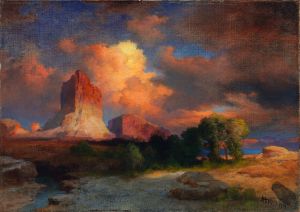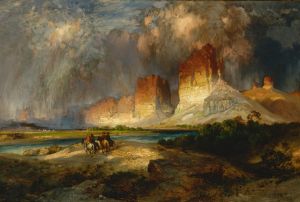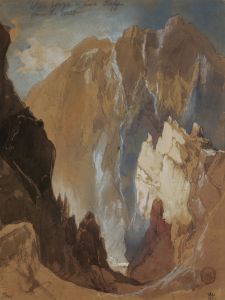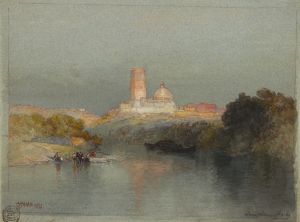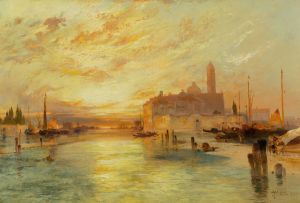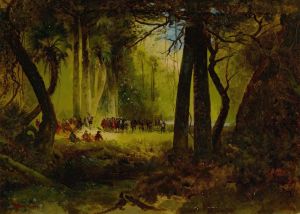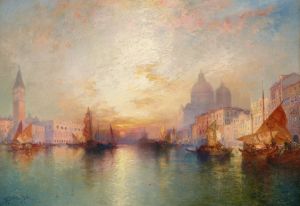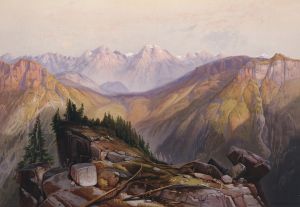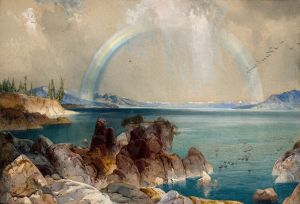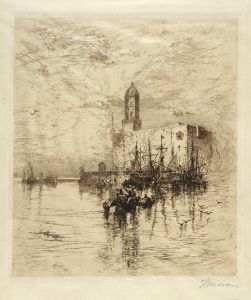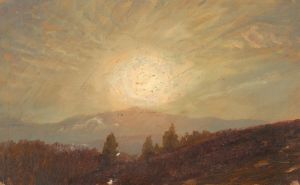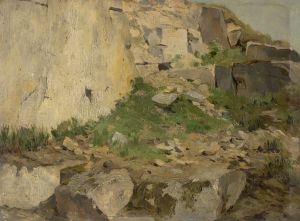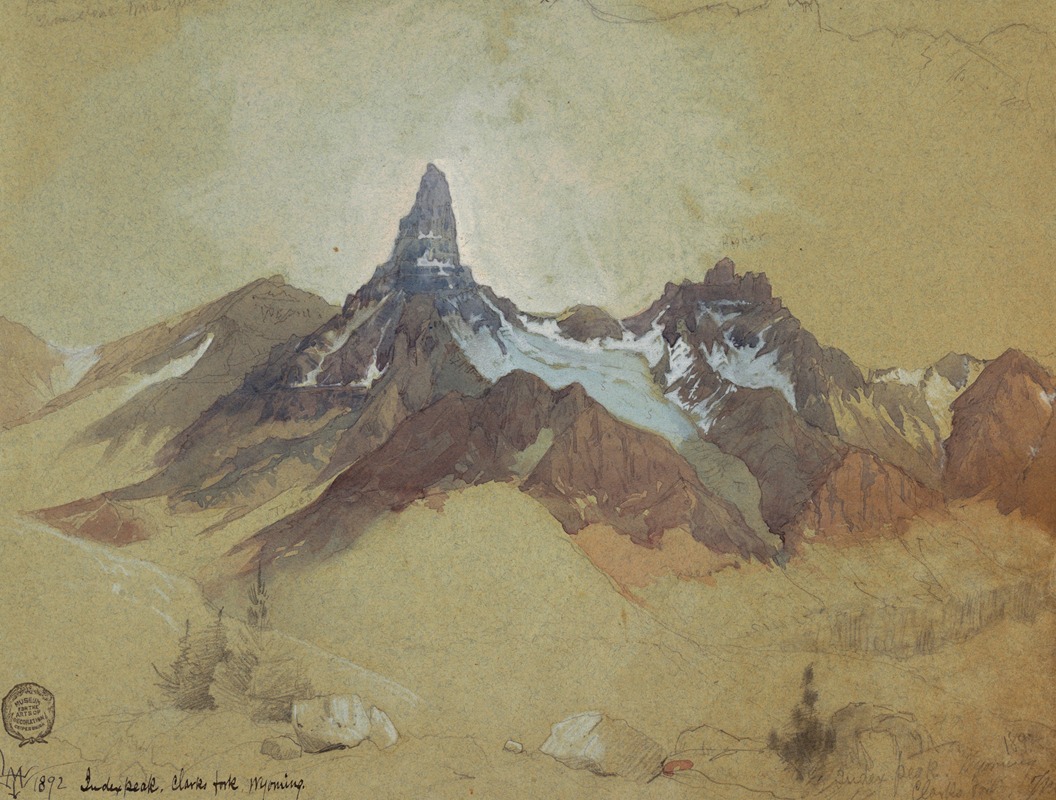
Index Peak, Clark’s Fork, Wyoming
A hand-painted replica of Thomas Moran’s masterpiece Index Peak, Clark’s Fork, Wyoming, meticulously crafted by professional artists to capture the true essence of the original. Each piece is created with museum-quality canvas and rare mineral pigments, carefully painted by experienced artists with delicate brushstrokes and rich, layered colors to perfectly recreate the texture of the original artwork. Unlike machine-printed reproductions, this hand-painted version brings the painting to life, infused with the artist’s emotions and skill in every stroke. Whether for personal collection or home decoration, it instantly elevates the artistic atmosphere of any space.
"Index Peak, Clark’s Fork, Wyoming" is a painting by the renowned American artist Thomas Moran, known for his significant contributions to the Hudson River School and his role in the exploration and artistic documentation of the American West. Moran, born in 1837 in Bolton, England, emigrated to the United States with his family and became one of the most celebrated landscape painters of the 19th century. His works are characterized by their dramatic use of light and color, capturing the vast and untamed beauty of the American wilderness.
The painting "Index Peak, Clark’s Fork, Wyoming" exemplifies Moran's mastery in depicting the grandeur of the American landscape. Index Peak is a prominent mountain located in the Absaroka Range of northwestern Wyoming, near the northeastern entrance to Yellowstone National Park. This region is known for its rugged terrain and stunning vistas, which have inspired countless artists and adventurers.
Moran's painting captures the essence of the American West during a time when it was still largely unexplored by European Americans. His work played a crucial role in shaping public perception of the West and contributed to the growing interest in its preservation. Moran's paintings, including "Index Peak, Clark’s Fork, Wyoming," were instrumental in the establishment of Yellowstone as the first national park in the United States in 1872.
The painting showcases Moran's ability to convey the majesty of natural landscapes through his use of vibrant colors and meticulous attention to detail. His technique often involved the use of oil paints to create rich textures and dynamic contrasts between light and shadow, which brought his scenes to life. Moran's depiction of Index Peak is no exception, as it highlights the dramatic interplay of light on the mountain's rugged surface and the surrounding wilderness.
Thomas Moran's work was heavily influenced by his participation in the Hayden Geological Survey of 1871, which was one of the first federally funded explorations of the Yellowstone region. During this expedition, Moran created numerous sketches and watercolors that would later serve as the basis for his larger oil paintings. These works not only captured the imagination of the American public but also provided valuable visual documentation of the region's unique geological features.
"Index Peak, Clark’s Fork, Wyoming" is a testament to Moran's enduring legacy as an artist who helped to define the visual identity of the American West. His paintings continue to be celebrated for their artistic merit and historical significance, offering viewers a glimpse into a time when the West was a symbol of both adventure and natural wonder.
Today, Thomas Moran's works are held in high esteem and can be found in major art institutions, including the Smithsonian American Art Museum and the National Gallery of Art. His contributions to American art and the preservation of the nation's natural landscapes remain influential, ensuring that his vision of the West endures for future generations to appreciate and admire.






